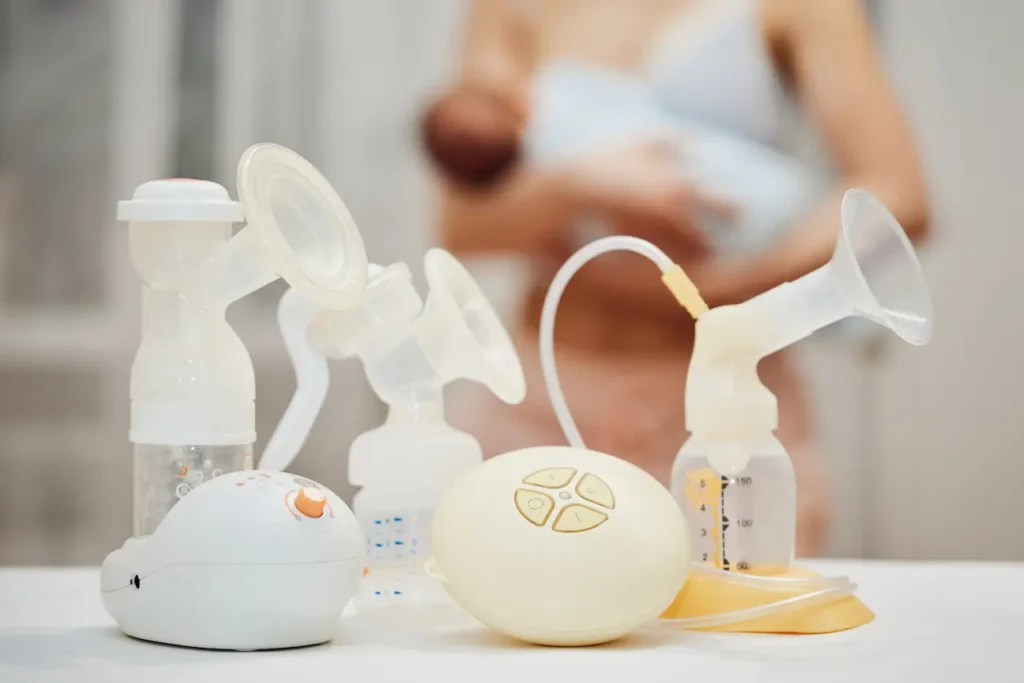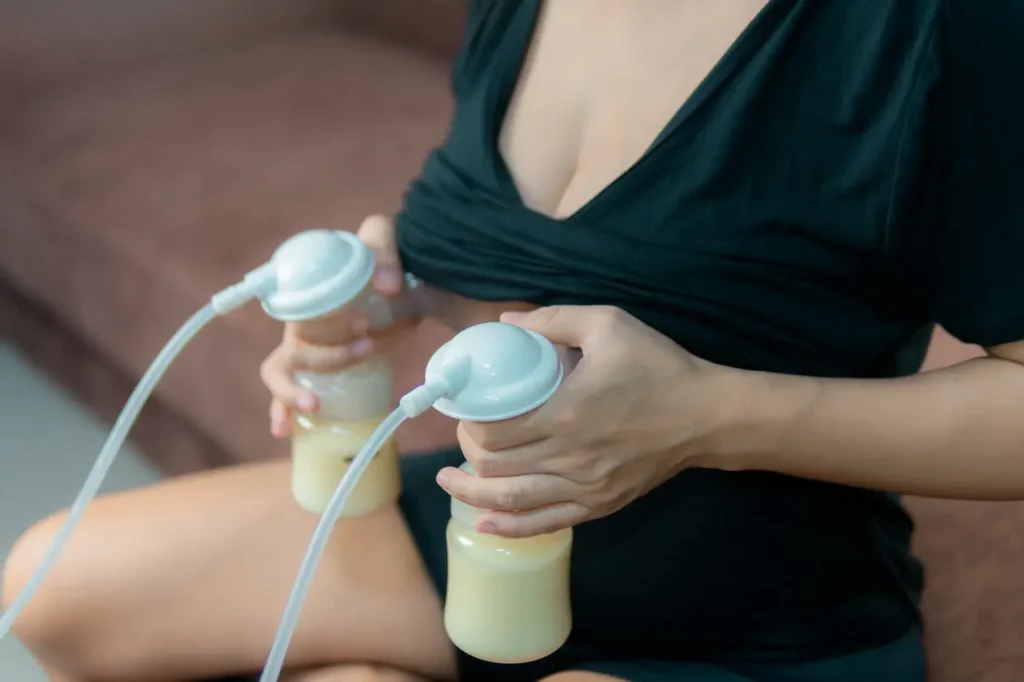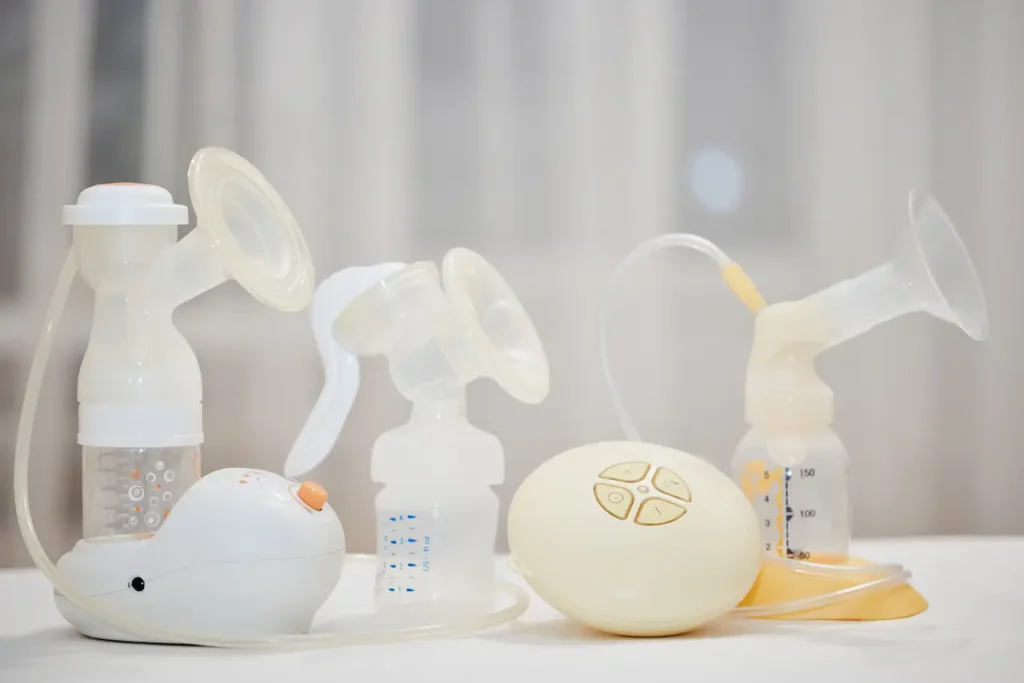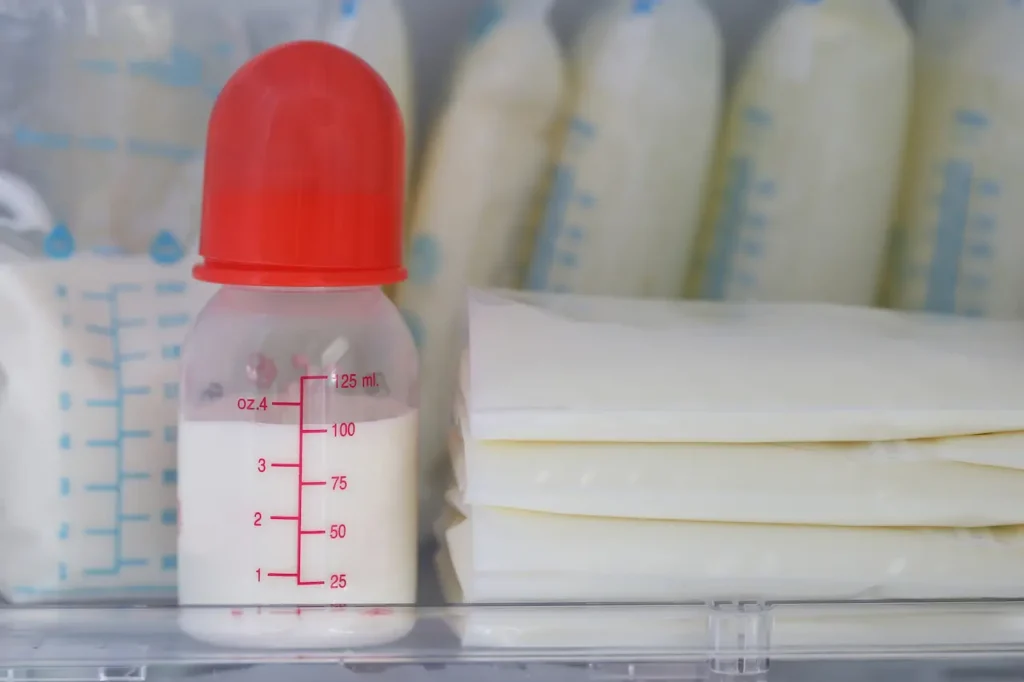The 7 Best Breast Pumps For Comfort and Convenience
Breast pumps can be invaluable to mums. They not only help catch milk as the baby feeds on one breast, but they also encourage breast milk supply.
We have scoured the market for some of the top breast pumps that nursing mums should consider. Seven products stood out.
What is a Breast Pump?
Breast pumps are devices that remove breast milk. If you are nursing, and need to do the following:
- You can be away from your child for several hours, or even longer, while still maintaining your milk supply.
- Store the milk you have pumped for your baby.
- Avoid a build-up of milk that can cause discomfort.
- To allow your baby to latch onto the breast, pull out flat nipples.
- Keep your milk supply up during the period that your baby cannot breastfeed.
- Increase your milk production.
You may find that removing (expressing) your milk is part of your everyday routine. It doesn’t necessarily mean that it is easy or intuitive to learn how to use the breast pump. It may take some time. Be patient. The right pump can make the process much easier.

Different Types of Breast Pumps
Different types of breast pumps work in slightly different ways.
Manual breast pump
This type of pump works by squeezing a lever that creates suction. The milk will then come out. Manual pumps require more effort from you, and each session of pumping can be lengthy. It is low-cost, but allows you to set the speed and rhythm. It is also easily portable and doesn’t need batteries or electricity to work.
The majority of manual pumps are single-pump pumps. You remove the milk from only one breast at a given time.
Breast pump powered
Powered pumps use motors to remove and create suction, as opposed to manual ones. Two types of powered breast pumps are available: battery-powered and electric breast pumps.
Plugging an electric pump into a wall socket is required while using it. Battery-powered pumps allow you to pump without having to be close to an outlet. You can recharge or replace the battery.
Some powered pumps have double pumps. This means you can remove the milk from both breasts simultaneously. Many parents appreciate this time-saving feature.
Wearable breast pump
This is the type of pump you can’t tuck in your bra. Some wearables can be more discreet than others. The general idea is to pump in public without anyone noticing. Wearable pumps free up your hands so you can do other things. (You don’t need to hold the parts of the pump in place.) This type is good if you have to do multiple tasks while pumping.
Hands-free Breast Pump
Wearable pumps are sometimes referred to by this term. A hands-free pump may also be attached to your chest and remain in place as you go about your day. These pumps don’t always fit in your bra.
A hands-free pumping breast is an option. It is a piece that helps you feel more comfortable while you are doing your daily activities.
Milk Collection devices
These silicone devices collect milk when your baby breastfeeds on the opposite breast. Some work by sucking milk from the breast, just like a pump. Some passively collect the milk that would otherwise have dripped onto your bra or nursing pad due to letdown. Speak to your provider if you have an excess of milk.

How can I choose the best breast pump for me?
Consider how frequently you’ll need to pump breast milk and for how long. Ask a lactation consultant, an early childhood nurse, a breastfeeding counsellor, or a midwife for advice.
Manual pumps are best for short-term (less than four weeks) or infrequent usage (once or twice a day). The hand pump is smaller and less noticeable than the electric pump. Hand pumps are portable and inexpensive.
You may want to hire or buy an electric pump if you plan to use it more often or for a longer period. If all of your baby’s milk will be expressed, for example. Some electric pumps let you pump breast milk from both breasts simultaneously. Electric pumps are bulky. Electric pumps are noisier than manual pumps.
If you find that you use the manual pump frequently, you can switch to an electric one. Choose the best pump that you can afford.
The 7 Best Breast Pumps for Nursing Mums
1. Lansinoh Compact single electric breast pump
Lansinoh Compact Single Electric Breast Pump has a lot of power, but is small and quiet. It is lightweight, easy to carry and can be easily slipped into your bag for when you are away from home. It is easy to use and has few parts to clean after use. It features a flexible and soft breast cushion that creates a comfortable seal. The adjustable 2-phase suction technology allows mum to express milk comfortably and with maximum flow.
2. Medela Swing single electric breast pump
This breast pump can be used daily. Easy to clean and assemble, and even simpler to use. It has a variety of settings/pump strengths and can be operated on batteries or plugged in.
3. Tommee Tippee Electric Breast Pump
This breast pump uses massaging movements that mimic the baby’s mouth. It pumps more milk. This breast pump is easy to use, assemble and BPA-free. It can be used on batteries or plugged in.
4. Haakaa Generation 3, Silicone Pump and Bottle Set
Haakaa’s manual breast pump is designed to create gentle suction and allows you to ‘catch’ milk on one breast while breastfeeding your baby on the opposite breast. The food-grade silicone is made to last and comes with many attachments. (And the famous flower stopper !)
5. Unimom Minuet Double Electric Breast Pump
This breast pump has a quiet, gentle and efficient operation. It is also easy to clean. Unimom is also partnering with the Australian Breastfeeding Association to help support breastfeeding mothers. A percentage of each purchase will be donated to the ABA.
One satisfied customer wrote: “I loved this breast pump as soon as I opened the package. When I imagined a breast pump, I instantly thought big and bulky. This pump is the exact opposite. It’s so compact and small that you can fit it easily into your purse. The screen is very bright and has a nice color. “I love how easy the device is to use.

6. Breast Pump Avent
The breast pump has three settings that are easy to use and encourage the flow of milk. Switch between the gentle and comfortable settings to get the best flow. The pump is easy to clean and store, so it’s perfect for use on the go.
7. Nuk Nature Sense Single electric breast pump
This powerful breast pump has 16 programs that make it easier to express milk. You can adjust the suction and save your favorite to the memory function. It is silent, has an LED screen, rechargeable batteries and a shoulder strap.
How do I use my breast pump?
Getting ready for pumping
- Follow the instructions provided by the manufacturer for assembling, cleaning and using your breast pump.
- Try it out and get used to it so that you are comfortable using it when you need it.
- Cleanse your hands using soap and water, and make sure to dry them each time.
- Grab a glass and find a comfortable place.
Pumping the pump
- Place the cup or shield on your nipple and gently massage the breasts towards the center.
- The cup should be in good contact with your breast.
- Relax and turn on the pump
- Use a steady pace when using a manual pump.
- Start with a low suction on an electric pump and increase it as you become comfortable.
- You should continue to pump until you feel your breasts are softer, or the milk flow has stopped. This could take up to 10-15 minutes.
Repeat the steps on your other breast.
Seal and label your container of expressed milk.
Ask your doctor for advice if expressing hurts. Try expressing on one breast at a time while your baby feeds on the other.
How long does it usually take to use the breast pump?
Your baby will get all of the milk you produce if they are well fed. It may take longer to express milk with a pump than it does to breastfeed your baby.

How should I store my expressed milk?
Store expressed breast milk in the refrigerator or freezer using clean plastic or glass containers.
How do you clean a pump for breast milk?
Even your pump can become contaminated if not properly cleaned. Cleaning and using the pump correctly can protect both you and your child.
The FDA recommends cleaning between each use. For specific instructions on how to clean your pump, you should consult the manufacturer’s instructions.
In general, steps for cleaning include:
- After pumping, rinse each piece of equipment that comes in contact with breastmilk as soon as you can.
- Use warm water and liquid dishwashing detergent to wash each piece.
- Each piece should be rinsed thoroughly in hot water for 10 – 15 seconds.
- Place the pieces on a paper towel or a rack for air drying.
It is acceptable to wipe the pump body in ethanol or isopropyl at a concentration of 70-90 percent, or boil the breast pump components in water. Stop using the tubing if it appears to be moldy or cloudy. Replace the tubing as soon as possible.
The Advantages and Drawbacks of Breast Pumps
Breast pumps can be used to express and store breast milk. However, they have their pros and cons.
Breast pumps have many advantages.
- Saves time. Breast pumps give you greater control over when your baby is fed. You can set up a schedule for yourself and pump during those times.
- Shared duties. It’s easier to feed your baby when you have stored and pumped breast milk. This is especially useful when you are recovering from birth, or if you need to feed your baby at night.
- Pumping can help you increase your breast milk supply. You can increase your supply of breast milk by pumping. You can create extra milk to freeze for later.
- Breaks. You’ll be able to do more errands and go back to your job, or even take a break, because you have an extra supply.
- Donor milk.
The following are some of the disadvantages of using a pump for breast milk:
- Fewer benefits for the immune system. It is better to use a breastpump than formula, but it may not be tailored for the baby at this time. The immune system of the baby is not as benefited by formula feeding.
- Extra expense. The cost of a breastpump and its accessories can be high. These could include milk bags and bras for milk storage, as well as breast pump equipment.
- Privacy issues. It may be difficult to use a pump at work or in public. You may find it difficult to find a quiet place to pump, and the equipment can be loud.
- Storage. It can be challenging to find a way to store and track pumped milk. Even frozen breastmilk can expire, so it is important to track its expiration.



